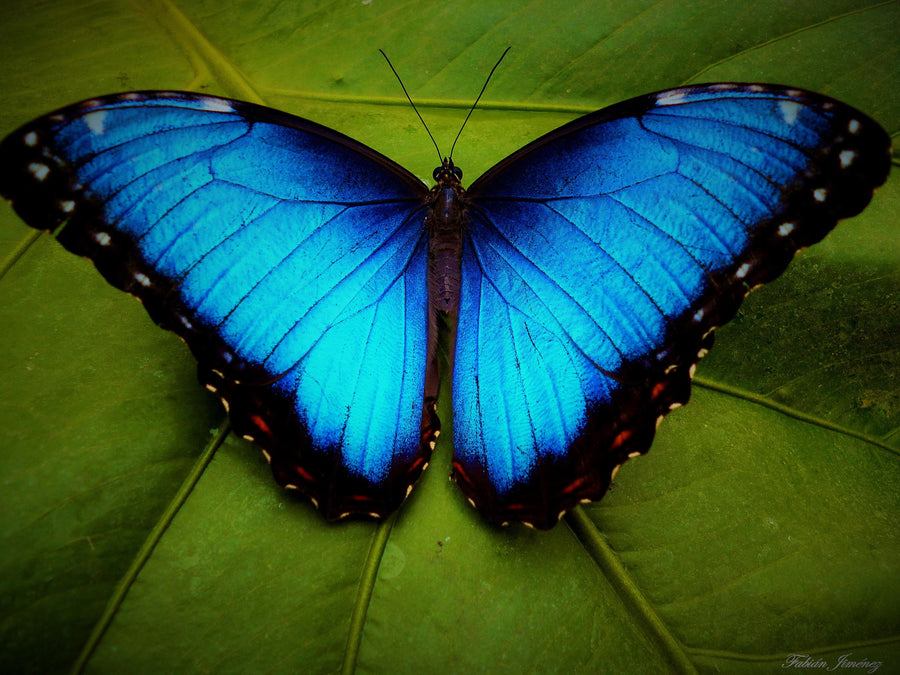
The blue morpho is among the largest butterflies in the world, with wings spanning from five to eight inches. As its common name implies, the blue morpho butterfly's wings are bright blue, edged with black. The blue morpho is among the largest butterflies in the world, with wings spanning from five to eight inches.
To compensate for their bright blue color - which could catch the attention of predators - the underside of the butterfly’s wings are covered in shades of brown, red, black and grey. This resembles the color and patterning of foliage and helps to camouflage. Their undersides also feature “ocellie” or eyespots which deter predators when the butterflies are at rest and their wings are closed. When threatened, the butterfly will emit a strong odor from a gland on their front legs that functions as another way to repel predators. The blue morpho also has what is known as a “flashing” defense. When in flight, its wings appear to flash from vivid blue to dull brown. The butterfly seems to continuously disappear and reappear again, making it very hard to track through the thick jungle foliage.
It's typically only the male who exhibits the gorgeous blue coloring. This is designed to intimidate rival males (blue morpho butterflies are highly territorial) as well as to make themselves extra visible to potential mates. Meanwhile, the females are generally not blue at all and tend to have have wings exhibiting various shades of brown, yellow and black. Interestingly, however, due to a process known as sexual dimorphism, there are some rare examples of butterflies with both male and female traits which leads them to have one blue wing and one more neutral-colored wing.
Blue Morpho’s wings are not actually blue at all! It is caused by the way light reflects off the microscopic scales on its wings. The scales are diamond-shaped and the color results from their specific formation and placement on the wing membranes. This is a phenomenon known as iridescence, a type of optical illusion which describes how hues change according to the angle from which they are viewed.
Adult Blue Morpho Butterflies drink their food, rather than eating it. It uses its proboscis (long, protruding mouth part) to drink sap and fruit juices. They also taste with sensors on their legs and taste-smell the air with their antennae.
Blue Morphos have long been a source of great fascination to humans. Traditionally, the native peoples of the Amazon associated the butterfly with a long list of superstitious beliefs, and they’ve alternatively been considered both wish granters and evil spirits. More recently, their light-reflecting abilities have been of great interest to scientists. Studying the phenomenon closely has allowed us to apply the same technique to various forms of technology, including iridescent strips on bills to prevent counterfeiting and energy-efficient color displays for devices
